Exporting Profile Data
The easiest way to export your Profile Data is through the 'Manage exports' app (Catalog > Profiles > Manage exports) .
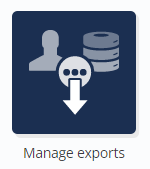
You can reach this app directly with the 'quick menu'.

You can also access the 'Manage exports' app through the Datamart Studio. At the bottom of the page, in the Other Actions, you will find a shortcut that will lead you directly to the app.

Good to know
In compliance with GDPR, it is also possible to export the data of a specific profile in order to transfer it to another provider in a secure way. To do so, we invite you to read the chapter dedicated to 'GDPR export'.
Creating an export
You will be able to create a new export by clicking on 'Create an export'.

In the one-shot tab, select "Profile" as type of table whose data you want to export.
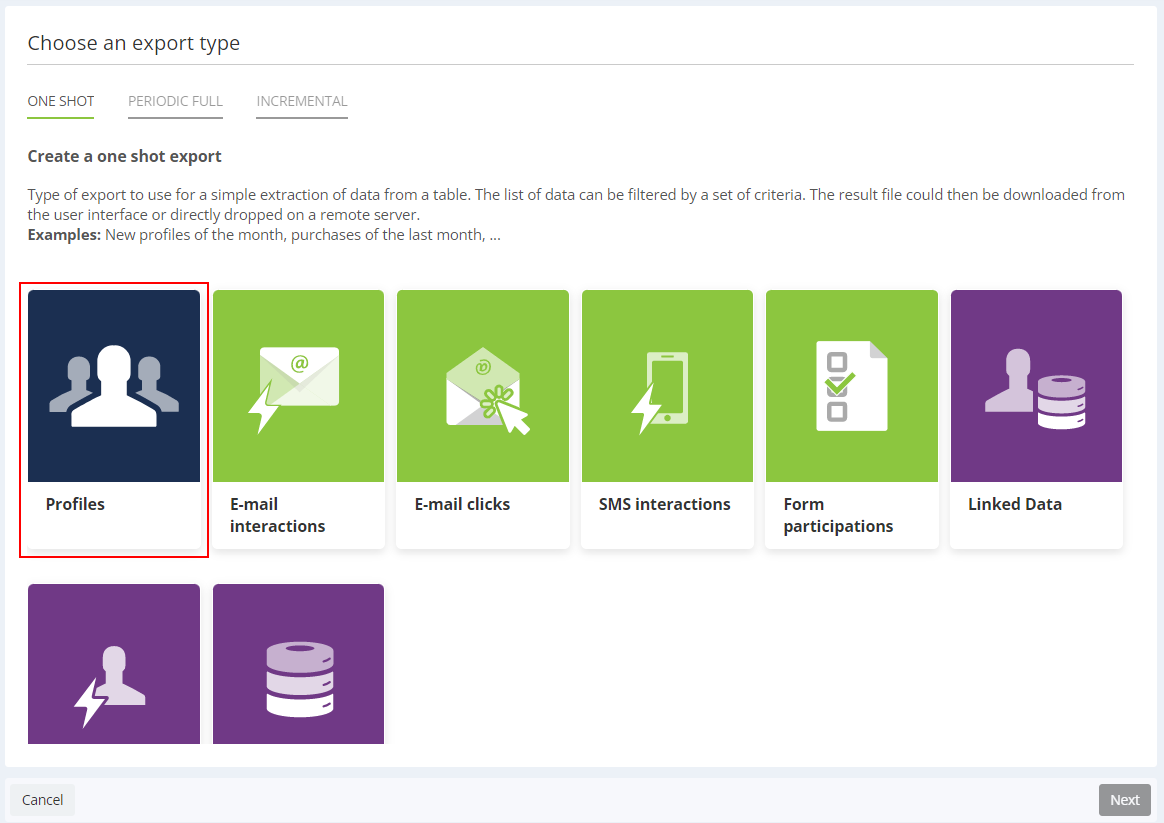
Exporting data
The following step will be the same for each method of export creation.
Step 1: General data
During the first stage of the export creation, you will have to define:
-
The name of your export: this name will be given to your file. By default, Actito will use the name of your database followed by the date, but it is possible to modify this name.
If you started your export via the Datamart Studio, the following elements will be automatically filled by Actito:
-
The profile database on which the export is based
-
The entity in which the export will be available.
-
The module in which the data are stored
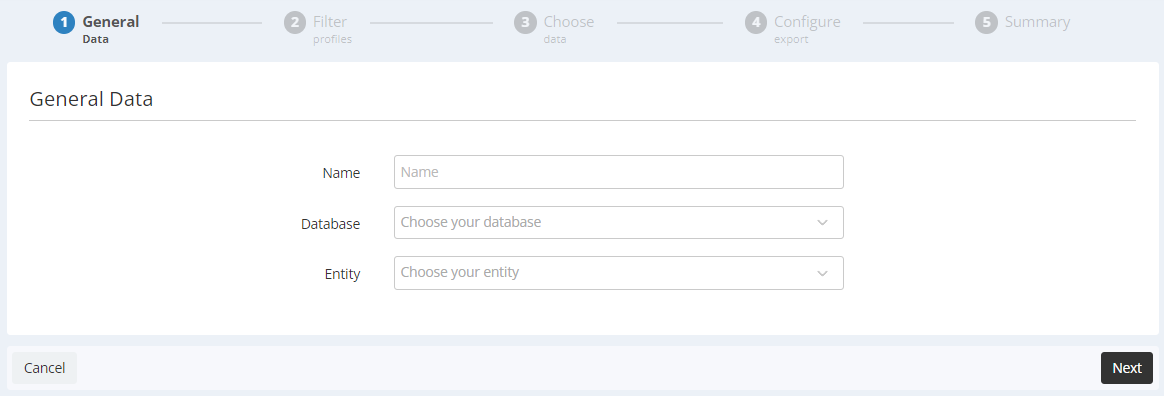
Step 2: Filter profiles
You can filter the profiles whose data you want to export.
This stage involves the use of the targeting module. For detailed information about how to use it, we invite you to read the chapter dedicated to Targeting in Actito.
You have the possibility to calculate the number of profiles to export.
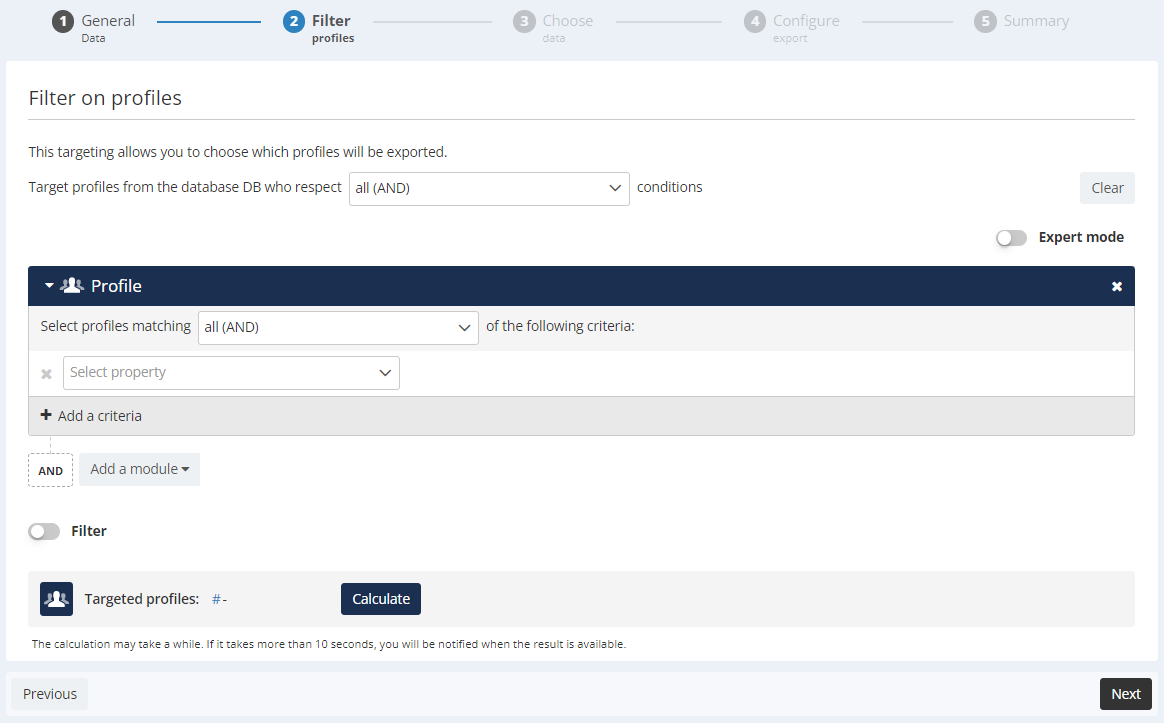
Step 3: Choose data
The goal of this step is to define what columns will appear in your export, by selecting what profile table data to include. You will be able to select profile attributes (including subscriptions and segmentations), as well as technical data related to interactions (creation, last e-mail opening...).
Selected fields will be highlighted in blue. To modify the structure of the Excel file obtained after the export, you can change the order of the blocks by dragging and dropping them.
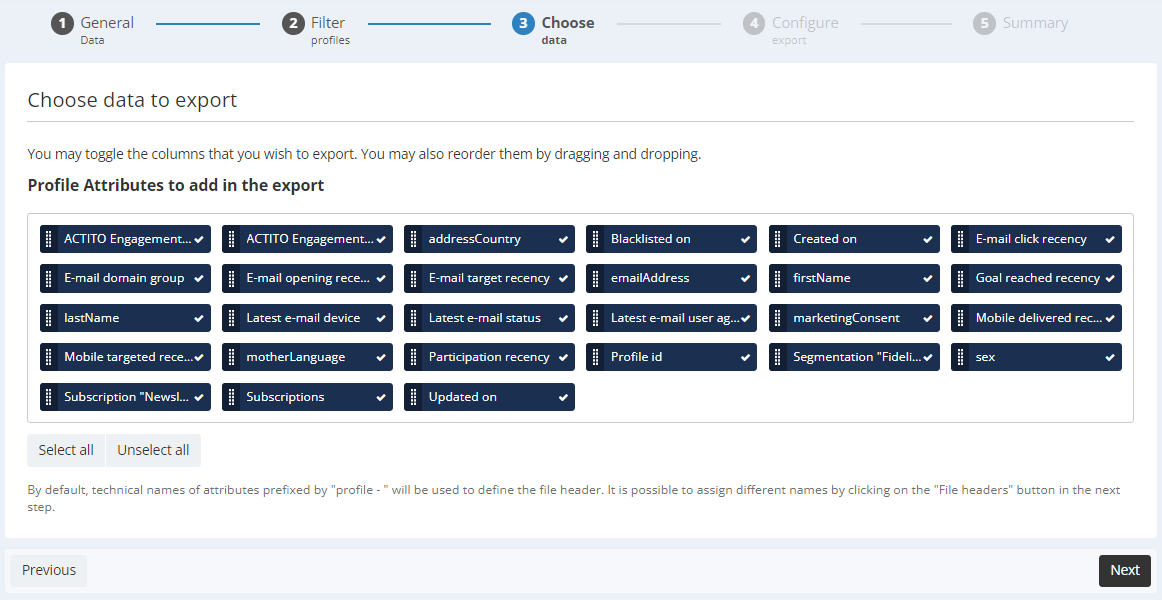
Note:
-
It is possible to exclude columns by clicking on unwanted elements, or to click on the 'Unselect all' button and make your choice from scratch.
-
Data are listed alphabetically by default.
-
In the interface, you will see the 'display name' given to attributes. Their 'technical names' will appear by hovering your mouse over the attribute. However, your export will use the 'technical names' of the attributes in the column headers.
Tip
At this step, you can choose between 2 formats to display the subscriptions of your profiles:
-
the 'Subscription' columns followed by the name of each subscription (e.g.: Subscription 'newsletter') allow to configure one column per subscription in your export, with a true/false value for each of them.
-
the 'Subscriptions' column allows you to have a single column for all the subscriptions in your export. The column will display the name of each subscription to which the profile is subscribed, as a multi-value attribute.
Both formats can coexist in the same export.
Step 4: Configure export
At this step, you will be able to configure the format of your export.
Format of values
Configure the settings for the values of your file content.
Each of these options will only appear if your export contains attributes of the corresponding type. The relevant attributes are displayed under the format suggestions.
-
Format of "booleans" type attributes : select the format for the attributes whose values are true or false (e.g.: subscriptions displayed as single-columns): 1/0, Y/N, or TRUE/FALSE
-
Format of "date" type attributes: select the format of the attributes of date type (e.g.: birthdate).
-
Format of "moment" type attributes: sele ct the format of attributes of time and date type (e.g.: technical attributes of creation time or of recency). Different levels of accuracy (with or without the time) and format are available.
-
Multi-value separator: sel ect the separator of attributes that can take several values (e.g. single-column subscriptions, hobbies,...). This is not the global separator of the file (selected in the next section).

Format of file
At this step, you will be able to choose the settings of the file.
The file is in CSV format, with UTF-8 encoding. You can choose what type of value separator you would like in the file:
commas
semicolons
tabs

Export example
A sample of 10 profiles will allow you to preview the values and columns you will get in your export file.
Step 5: Summary
This stage will let you start the export. Your export summary is divided in different sections.
First, you'll find the 'General Data' section, reminding you of the name, database and entity of your export.

In the targeting section, you will find information on your target, as well as the number of targeted profiles.

In the 'Data' section, you will see all the data fields that will be included in the export.

In the 'Parameters' section, you will be able to verify that you selected the right data and file format.

Once you have checked the summary and you are sure that you have correctly defined your export, you can proceed to select the way in which you want to transfer the exported data. You can either do it manually, or automatically exporting it to the location in the cloud that you choose. In this second case, a number of additional parameters must be defined, namely the exact target location, the file name, the pattern of the suffix and the type of file compression.
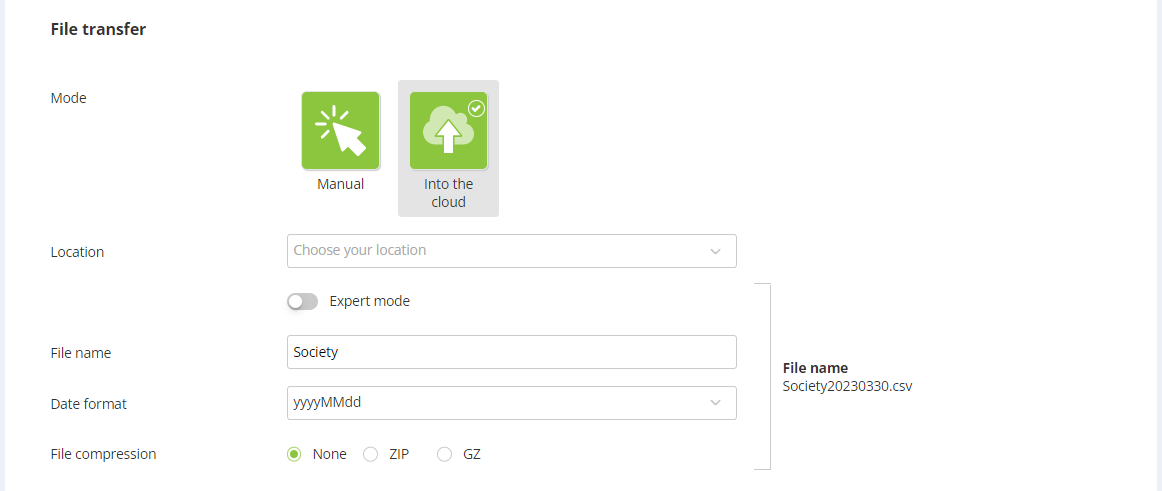
Cloud locations the TransferBox of your licence, or a directory in a FTPS/a SFTP.
For the latter, it must be set-up in your licence.
If there are no cloud locations available for your license and you would like to start using this feature, please contact our support or your Actito contact person.
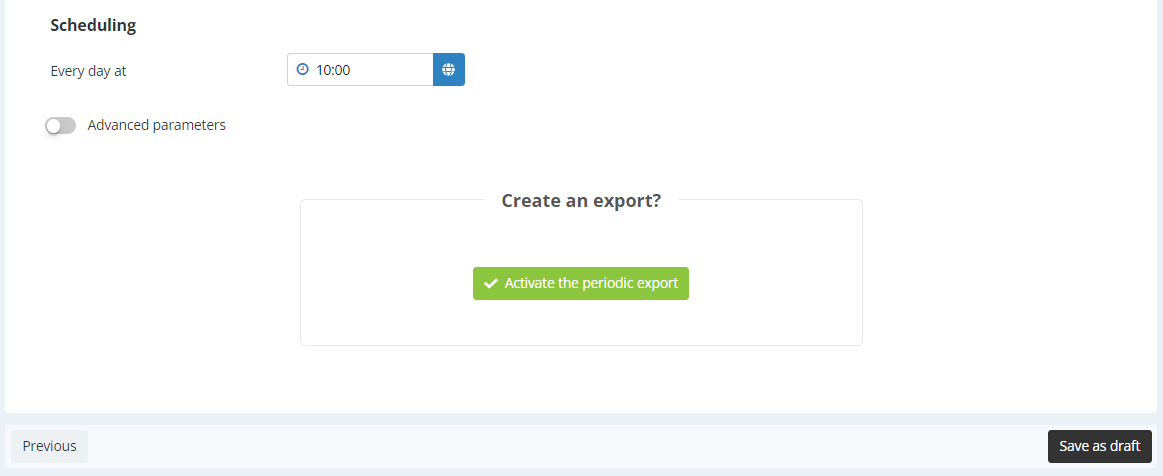
We are now ready to finish the definition of your export. If you would like to create the export, click on 'Create'. You can also click on 'Save as draft' so that the export is saved and you can continue editing it later. You will find it in the 'In definition' tab of the 'Manage exports' app.
After launching the export, you will automatically exit the creation process and be sent back to the main menu of the application used to start the export ('Manage exports' or Datamart Studio).
Info
The export creation will be immediate. A pop-up will inform you of the success of the creation.

Click on this pop-up to immediately go to step 6.
Step 6: Download your export
If you chose to manually collect the export file, go back to the 'Manage exports' app.
Next, you will need to select the 'Finished' tab and then choose the relevant file. The line in question will turn green.
Finally, click on the 'Download' button. The file will be automatically downloaded on your computer.

Good to know
After its creation, an export is available for download during 30 days.
